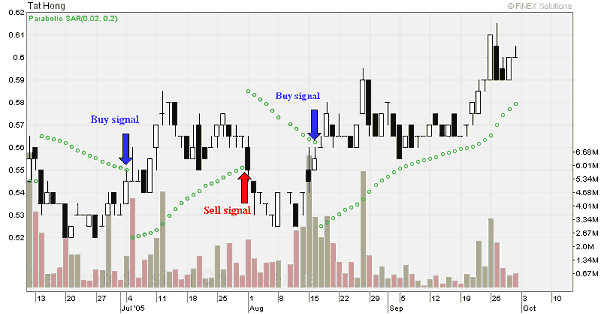Contents:


When I get done with the checkup call, I usually circle back with the strategist to pass on any notes that came up to make sure we’re all on the same page. If there are issues, the strategist sets a meeting to make corrections. Pool together the assessment, contract, and sales meeting notes as a primary handover packet. Don’t wait for your clients to come to you—be proactive in finding solutions, communicating with them, and always do your best to ensure their satisfaction. To ensure a successful collaboration, you should constantly emphasize what success looks like, for example through reports. Contract signing makes it all official and details the agreement between you and your client.
While pre-onboarding is about determining compatibility and expectation setting, onboarding is the phase to affirm the sale and collect all the details you need to complete the project. Onboarding your new client is only the first part of your business relationship. The maintenance phase is about everything that happens during the project. By building in consistent check-ins, project updates, delivering on expectations, and staying open to feedback, you’ll set yourself up for more straightforward, more successful projects. Platform built specifically for HubSpot, so you can stop onboarding customers with spreadsheets and project management tools.
Contract signing
For example, your accounting equation ops team should be automatically tagged when you change a lead’s status from “prospect” to “new customer” as a reminder to send a welcome gift. Make it easy for customers to find extra support if they need it. For some users, the walkthrough may not be enough to get them started with your product, and they might need more support. Make sure this is clearly visible and accessible within the walkthrough, for example, by providing contact details for your support team or having a live chat support feature. At this stage, you want to get them set up and ready to start using your product.

This document will detail your terms of service, payment requirements, and sometimes highlight an itemized list of promised deliverables. Often, the contract will also specify the number of revisions the client is owed. After an initial consultation call to understand a client’s essential needs, you will almost always begin the contract and negotiation phase by drawing up a proposal. In the proposal, you will outline your proposed strategy, deliverables, the scope of work, timeline, and pricing.
Provide learning materials for busy clients
When they first log in, your new customer shouldn’t find themselves faced with a blank screen. Whether you start off with a welcome pop-up or a set-up wizard, it’s important that you have a way to show your customers around and help them start using your product. It also gives customers the option to sign up with other tools they already use.
- Keeping up with new client chat, email, or phone lines is a great way to ensure that new leads are getting the support they need.
- Here are 6 of the best alternatives that are better than Pendo’s analytics and onboarding platform, in at least one way.
- The purpose of a welcome packet is to provide new clients with information and resources, as well as to affirm the sale and set the tone for a project.
- A customer feedback survey is a great way to find out this information.
- Understanding what they do and don’t have in place should be used to develop a scope of work.
The easiest way to align teams is through a centralized productivity platform, like ClickUp. Teams can easily collaborate on every aspect of a project—without ever needing to hop between tools and platforms. The post-kickoff internal meeting is your opportunity to surface any takeaways from the kickoff call, work through foreseeable roadblocks, and answer questions. Just like the project kickoff meeting aligns your team with your client’s, the post-kickoff internal meeting aligns your different internal teams on the project.
Do a 30-Day Checkup Call
For a smoother onboarding process, read about the sales to service handoff. Asking clients to highlight what drew them to you lets you get a sense of what they want. It tells your client if their project has been a success, and informs the next step in your partnership. Successful measurement, however, depends on the right metrics. Ask this question to understand what metrics the client wants you to use, how they define these metrics, and how they measure success.
Business of Home – Business of Home
Business of Home.
Posted: Mon, 03 Apr 2023 07:00:00 GMT [source]
Automating even a few steps in your process can clear up mental space for more high-impact tasks. You’ll also want a way to track and assign specific tasks, and add due dates if you have any. If you want to keep your clients or teammates in the loop, you can use automation to send project updates as messages in your chat app or otherwise automate your project management workflows. First, you need to create a space in your project management workflow for the new client. This could be a new Google Drive folder or Notion page, a board on Trello or monday.com, or anything in between.
Although the benefits of a good onboarding experience are the same for both services and products, the implementation differs widely. For our purposes, we’ll focus more directly on onboarding for services. Although onboarding is standard in both the professional services and Software-as-a-Service industries, onboarding clients is different from onboarding customers. Your relationship with the customer shouldn’t end once the onboarding process is complete. After all, it would be a shame to build all of this rapport just to cut ties abruptly.
Customer Onboarding Helps You Grow Better
Too often, agencies will promise the moon to get the business and then can not figure out why they lose business quickly.” Bergman further shares. If happy clients are your goal, then there should be no room for guesswork. Ask, drill, and confirm until you are 100% clear on what your client wants. First, check in with your client around the 30-day mark and encourage them to get on a call with you to discuss any challenges, thoughts on pivots, and feedback. At this point, the goal is to get started with the project on the right footing.
At this stage, you should be proactive and reach out to the client. Before they even decide to work with you, they need to trust that you understand their needs and can deliver. Get a system to organize your clients, payments, and projects under one roof. Clients will notice your willingness to listen, and your company will gain a solid reputation for caring and listening to clients.
Organize your communication.
This content is provided by an external author without editing by Finextra. Make a list of everything you find, both positive and negative, and remember to position the negatives as opportunities for improvement. Set up client meetings without the annoying email back-and-forth.

Thus, onboarding is a crucial arm of a complete client retention strategy. Because a platform that doesn’t work for your unique needs only hinders productivity. Experience freedom from context switching today and download our free customer onboarding template in ClickUp. After a new customer signs up, the next step in your onboarding process is to send them a welcome email. This email should direct them straight back to your product so they can start using it and getting value from it. It’s tempting to think that customer onboarding doesn’t start until a customer has actually signed up for your product.
Onboarding new clients is the process of welcoming them into your company. When you are onboarding new clients it sets the tone for your working relationship with that client. If there is no plan in place the process will lack direction and this can result in confusion and miscommunication down the road. Onboarding new clients in a repeatable, efficient manner are important for the long-term growth of your company. Your client’s target audience helps you better tailor services to meet their needs. To ensure the technical onboarding goes smoothly, have a plan in place.
- This contract should also include important pricing and billing information.
- It’s a huge mistake to assume all your users are the same – and that they’ll benefit from a similar customer experience .
- As you’d expect, a poor signup flow can dramatically impact the whole client onboarding experience.
- Once a user selects five options, the platform uses this information to create a feed that simplifies discovering and saving pins.
You may not know how to optimize it, or what steps to take to create a new client onboarding process. Examples include automating client information, document signing, access to different tools and resources, and so on. Automation will save you precious time and resources while keeping your clients satisfied.
Cass Information Systems reports First Quarter 2023 Results – Yahoo Finance
Cass Information Systems reports First Quarter 2023 Results.
Posted: Mon, 17 Apr 2023 21:00:00 GMT [source]
With over 13 years of experience across Wall Street, the non-profit sector, technology startups, and family-owned businesses, she now helps service-based businesses. It’s a huge mistake to assume all your users are the same – and that they’ll benefit from a similar customer experience . New client onboarding is never going to be completely smooth sailing. You can help drive users toward activation essentially as soon as a new client starts using your product. It’s a term describing the journey a user needs to go on to actually get an account, enter your application, and start using your product. Leave the call with the client understanding how much you value your relationship and his business.







